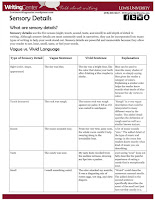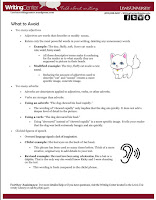Using the Five Senses in
Fiction Writing: Crafting a Multisensory Experience
By Olivia Salter
As writers, we often rely on sight to describe scenes, but to truly immerse readers in our narratives, we must engage all five senses. Let’s explore how sensory details enhance storytelling and create a vivid reading experience.
1. The Five Senses Technique
The five senses technique enriches your writing by tapping into taste, touch, sight, smell, and sound. Here’s how to wield each sense effectively:
a. Sight (Visual)
- Paint Pictures: Describe what characters see—the play of light, colors, and shapes. Make scenes come alive through vivid imagery.
b. Sound (Auditory)
- Auditory Landscape: Capture sounds—the rustle of leaves, distant laughter, or the hum of machinery. Sound adds depth and realism.
c. Smell (Olfactory)
- Scent Memories: Invoke scents—the tang of rain, the warmth of freshly baked bread, or the acrid odor of burnt rubber.
d. Taste (Gustatory)
- Flavorful Moments: Explore taste—the bitterness of coffee, the sweetness of ripe fruit, or the saltiness of tears.
e. Touch (Tactile)
- Texture and Sensation: Convey touch—the roughness of tree bark, the coolness of metal, or the softness of a lover’s skin.
2. Sensory Detail in Action
-
Characterization: Use sensory cues to reveal characters. A chef’s calloused hands hint at their culinary passion; a musician’s ear for subtle notes speaks volumes.
-
Setting: Infuse your world with sensory richness. A bustling market teems with scents, sounds, and textures; a moonlit forest whispers secrets.
3. The Twist: Emotional Impact
Remember, sensory details aren’t mere decoration—they evoke emotions. The taste of childhood ice cream, the scent of a lost love’s perfume, the touch of a cherished heirloom—these resonate with readers.
So, as you write, engage all five senses. Let your words become a symphony of sensations, inviting readers to step into your story world and feel its heartbeat.
(Note: The senses are your palette; use them to paint unforgettable scenes.)




